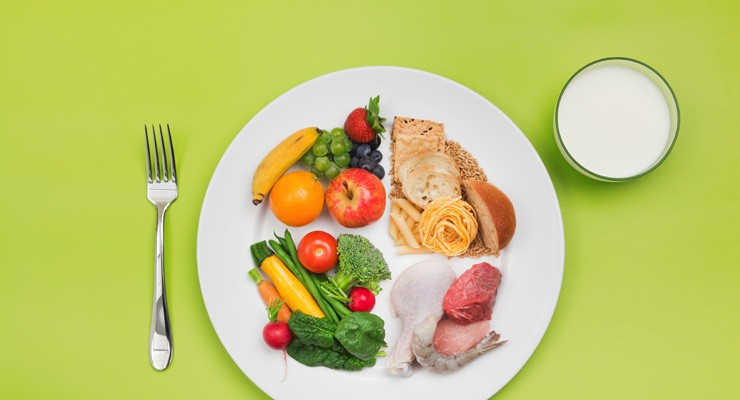5 Food Myths About Diabetes
Diagnosis is more complex than what you can and cannot eat.

If you’ve been diagnosed with diabetes, you might be thinking about the foods you can no longer eat. Not to worry — there are ways you can make healthy choices without giving up all of the foods you enjoy. Here are five common food myths and facts about diabetes:
MYTH 1: People with diabetes can’t eat sweets.
Eat sweets and desserts in moderation. The key is to enjoy small amounts at one time, so you can fill your plate with healthier foods. Consider limiting other carbs in your meal to make up for any sweet treats. Talk to your doctor about how sugar may fit into your meal plan.
MYTH 2: People with diabetes must follow a special diet.
Following healthy eating guidelines and eating healthy foods from all food groups is key to living well — including those with diabetes. Eating healthy (and staying physically active) may help you control your blood sugar, blood pressure and cholesterol.
MYTH 3: Eating too many sugary foods causes diabetes.
Diabetes occurs when the body does not make enough insulin or does not use it properly. Eating too many sweets may contribute to weight gain. And being overweight or obese is a risk factor for type 2 diabetes. But eating sugary foods does not cause type 1 diabetes — it is caused by genetics and other factors.
MYTH 4: People with diabetes should fill up on starchy foods like pasta, lentils, rice, corn and bread.
Most carbohydrates (carbs) come from starches, fruits, milk and sweets. Foods with carbs raise blood sugar. The more carbs you eat at one time, the higher your blood sugar may rise. Aim for a quarter of your plate to be starches or grains and half your plate to be non-starchy vegetables. Protein like chicken or fish should fill out the remaining quarter of your plate.
MYTH 5: Avoid fruit because it’s high in fructose.
While fruits contain carbs, they are also full of vitamins, minerals, fiber and flavor. Eat fruits raw or cooked. Choose whole fruits over juice; they’re more filling and have more fiber. Drink fruit juice with no added sugar.
Living with diabetes is about what you eat and how much you eat. Enjoy balanced meals with a variety of carbs. And talk to a registered dietitian or certified diabetes educator if you need help creating a meal plan. This way, you can eat many of your favorite foods while keeping your blood sugar under control.
By Susan G. Warner, Contributing Writer
Sources
American Diabetes Association. Standards of medical care in diabetes–2019. Accessed February 13, 2019.
American Diabetes Association. Diabetes basics: Facts about type 2. Accessed April 5, 2019.
Choosemyplate.gov. Dietary Guidelines and MyPlate. Accessed April 5, 2019.
National Institute of Diabetes and Digestive and Kidney Diseases. Diabetes Diet, Eating, & Physical Activity. Accessed April 5, 2019.
Last Updated: February 16, 2019
